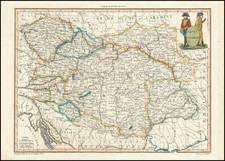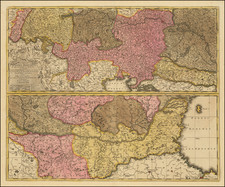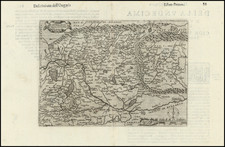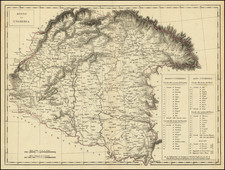Nicholas Zrínyi Sacks Pécs in 1664
Fascinatiing image of the fortified town of Fünfkirchen (Pécs), illustrating the Christian sacking of Pécs in 1664.
Pécs
After the Battle of Mohács (1526) in which the invading Ottoman army defeated the armies of King Louis II, the armies of Suleiman occupied Pécs. Not only was a large part of the country occupied by Ottomans, the public opinion of who should be the king of Hungary was divided, too. One party supported Ferdinand of Habsburg, the other party crowned John Zápolya in Székesfehérvár. The citizens of Pécs supported Emperor Ferdinand, but the rest of Baranya county supported King John. In the summer of 1527 Ferdinand defeated the armies of Szapolyai and was crowned king. Ferdinand favored the city because of their support, and exempted Pécs from paying taxes. Pécs was rebuilt and fortified.
In 1529, the Ottomans captured Pécs again. The Ottomans forced Pécs to accept King John (who was allied with them) as their ruler. John died in 1540. In 1541, the Ottomans occupied the castle of Buda, and ordered Isabella, the widow of John to give Pécs to them, since the city was of strategic importance. The citizens of Pécs defended the city against the Ottomans, and swore loyalty to Ferdinand. The emperor helped the city and defended it from further Ottoman attacks, but his advisers persuaded him into focusing more on the cities of Székesfehérvár and Esztergom instead of Pécs. Pécs was preparing for the siege, but a day before, Flemish and Walloon mercenaries fled from the city, and raided the nearby lands. The next day in June 1543 the Bishop himself went to the Ottomans with the keys of the city.
After occupying the city, the Ottomans fortified it and turned it into a real Ottoman city. The Christian churches were turned into mosques; Turkish baths and minarets were built, Qur'an schools were founded, there was a bazaar in place of the market. For a hundred years the city was an island of peace in a land of war. It was a sanjak centre in Budin Eyalet at first and Kanije Eyalet later as "Peçuy".
The Ottoman chronicler İbrahim Peçevi (Ibrahim of Pécs), whose work forms the main body of reference for Ottoman history between 1520-1640, was a native of the city.
In 1664, Croat-Hungarian nobleman Nicholas Zrínyi arrived in Pécs, with his army. Since the city was well into the Ottoman territories, they knew that even if they occupy it, they could not keep it for long, so they planned only to pillage it. They ravaged and burned the city but could not occupy the castle. Mediaeval Pécs was destroyed forever, except the wall encircling the historical city, a single bastion (Barbakán), the network of tunnels and catacombs beneath the city, parts of which are closed down, other parts are in possession of the famous
After the castle of Buda was wrested from Ottoman rule in 1686, the armies went to capture the rest of Pécs. The advance guards could break into the city and pillaged it. The Ottomans saw that they could not hold the city, and burnt it, and withdrew into the castle. The army led by Louis of Baden occupied the city on October 14, 1686 and destroyed the aqueduct leading to the castle. The Ottomans had no other choice but to surrender.











![[ Holy Roman Empire ] Germania del Gastaldo](https://storage.googleapis.com/raremaps/img/small/73754.jpg)
![[Nové Zámky / Érsekújvár, Slovakia] La famosissima Piazza di Neuhausel nelli Confini di Ungaria assediata da Turchi li 13 Agosto 1663](https://storage.googleapis.com/raremaps/img/small/75781.jpg)

